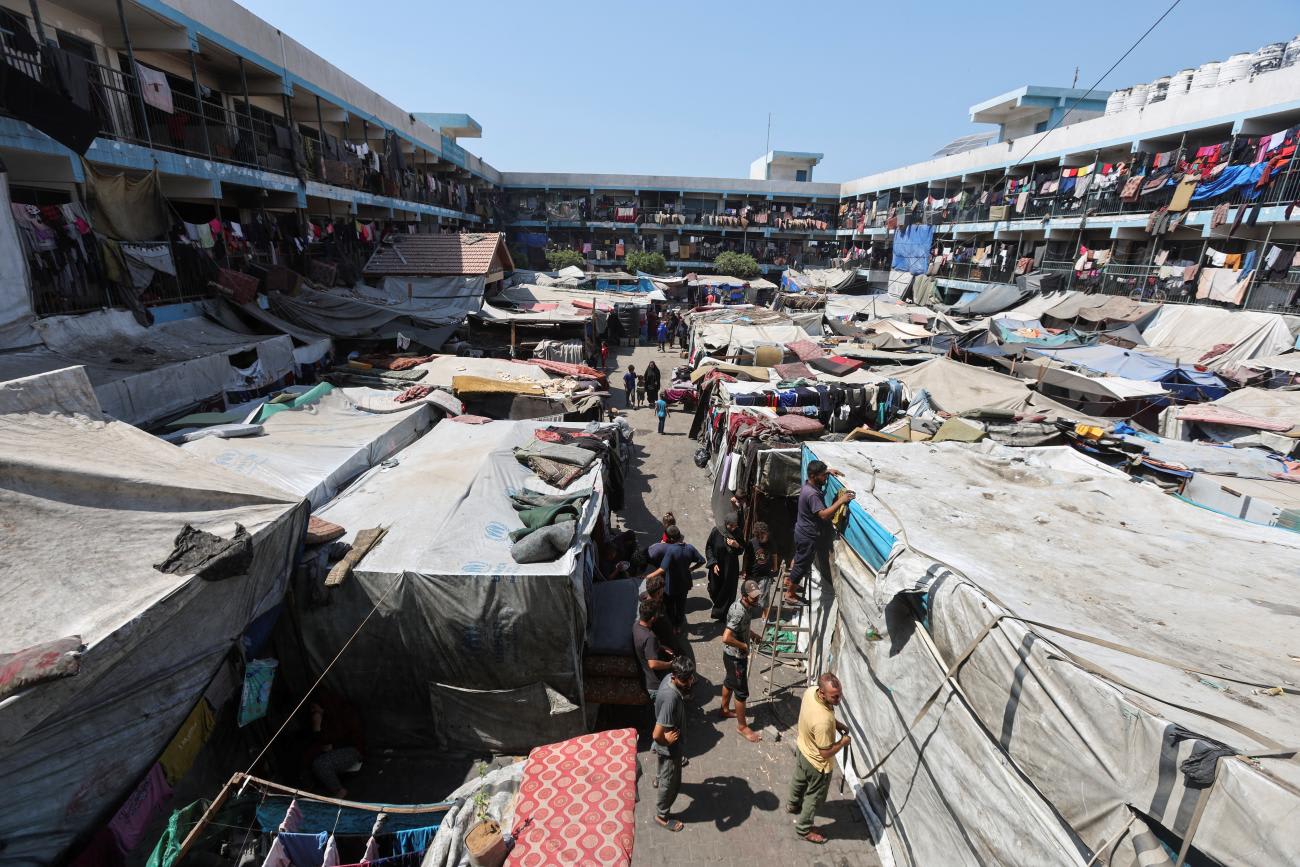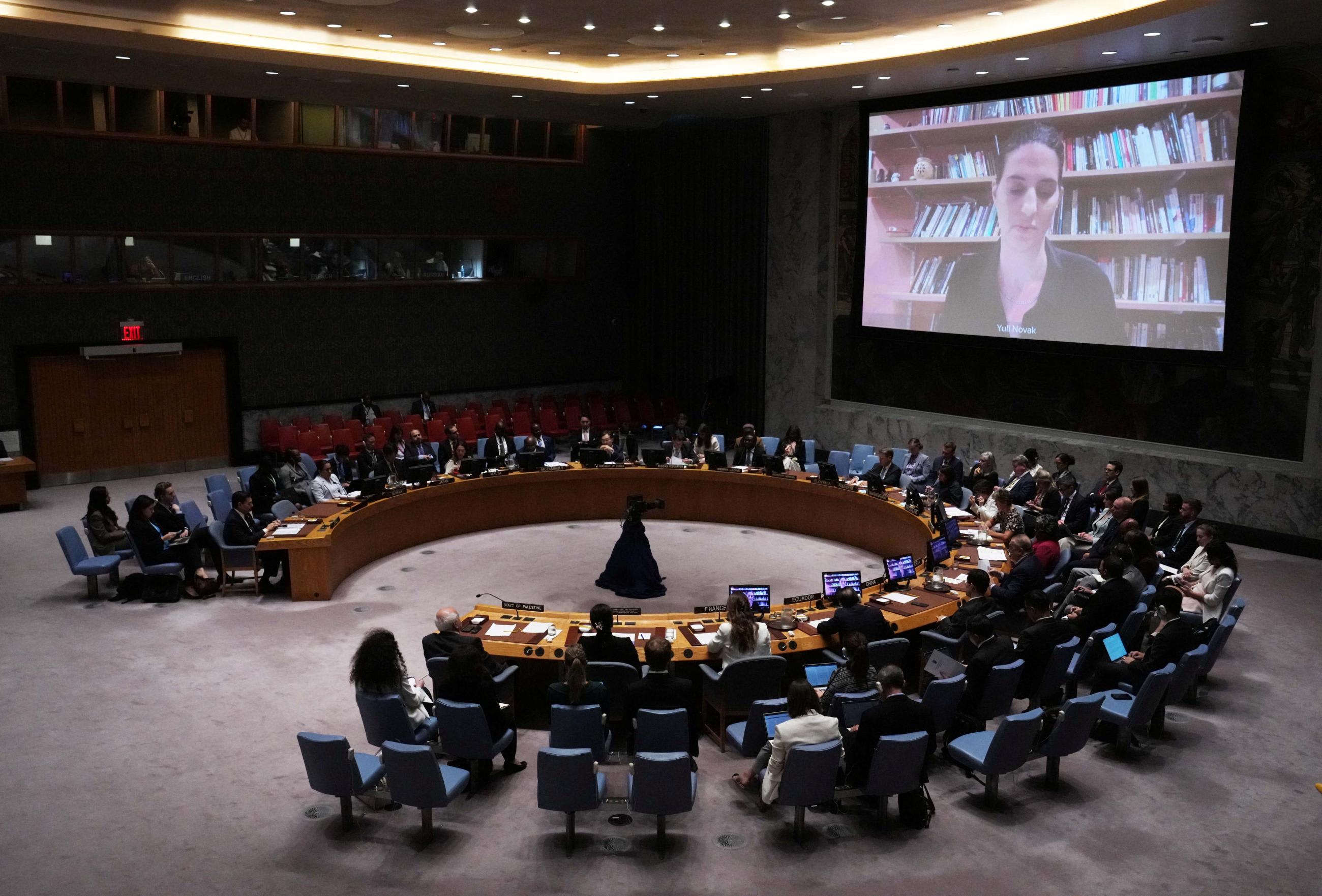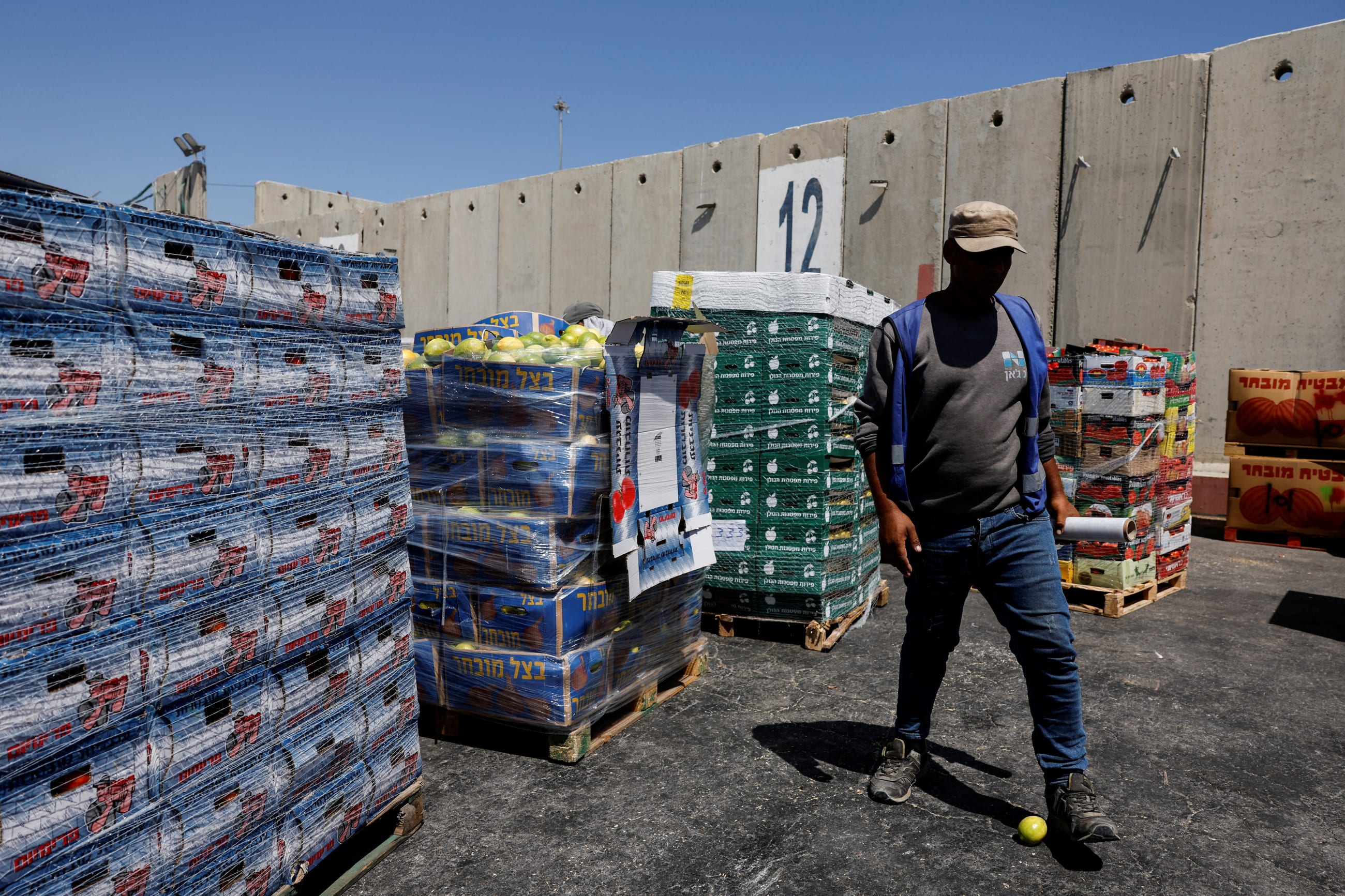One year after Hamas's gruesome attack on Israel, the war in Gaza has expanded into an Israeli campaign against Hezbollah in Lebanon, drawing a military response from Iran.
Nonetheless, although fighting between Israel and Hamas has subsided, the humanitarian situation in Gaza continues to deteriorate. According to the UN Office for Coordination of Humanitarian Affairs (OCHA), 90% of Gaza's population, some 1.9 million people, have been displaced in the past year. Some 86% of Gaza's territory is under Israeli-issued evacuation order. The death toll stands at more than 41,000—with Israel and the United Nations divided over breakdown of fatalities between Hamas militants and civilians—and reported injuries at 96,000.
Infrastructure—including buildings, sanitation facilities, water pipes, and hospitals—remains only partially operational and the population is threatened by severe food insecurity and infectious diseases. Although the risk of polio was contained, Hepatitis A is affecting tens of thousands of children in the Gaza Strip, as are multiple other intestinal and skin infections, and the risk of measles and cholera outbreaks has increased. Of the 625,000 school-age children who have not had access to formal education, the United Nations was able to set up temporary learning spaces serving only 5%, some 33,600 Palestinian children.
It is tempting to focus on technical aspects of the crisis in one sector, such as food or sanitation, but the fact is that the entire humanitarian aid supply chain from donor to beneficiary is plagued by much broader structural, procedural, and political challenges.
After a year of fighting, the risk of donor fatigue, misalignment of aid with needs, and inadequate monitoring of assistance is growing
First, after a year of fighting, the risk of donor fatigue, misalignment of aid with needs, and inadequate monitoring of assistance is growing.
Second, inter- and intra-actor coordination is hampered at all levels. Within the United Nations, multiple high-level officials are competing over the humanitarian file. Further, the United Nations, other humanitarian actors, and Israel are mired in a mutual blame game after relations reached a record low at both the leadership and working levels, as well as between Israel and Egypt, Gaza's two neighbors, who now maintain only minimal channels of communication.
Third, the problem that offers the most straightforward solution, are the limited access routes into Gaza and aid distribution inside the Strip. Because Egypt's Rafah crossing has been closed since May, Kerem Shalom is the only major entry point into Gaza. Still, most humanitarian supply is shipped first to Egypt, creating a backlog with no effective system for monitoring or prioritization.
Once limited aid quantities enter Gaza, a more serious challenge emerges—protecting aid and aid workers, who are threatened by Hamas; suboptimal coordination with the Israel Defense Forces (IDF); and violent looting by gangs stemming from growing lawlessness.
Finally, compounding those challenges is Israel's refusal to discuss any viable "day-after" diplomatic vision for end of the war, making the international community anxious about the possibility of prolonged Israeli occupation of Gaza, with or without assuming the costs of meeting the needs of the civilian population there.
Those challenges were apparent early on, yet despite efforts and attention by the international community and Israel, the situation has only worsened in the past year. All sides should reflect and learn important lessons from the failings, and small successes, of the past year and join forces to advance their shared interest—mitigating the suffering of Palestinian civilians in Gaza.
One Step Forward, Two Steps Back
Gaza's humanitarian crisis reflects a collective failure, yet much of the focus has been on Israeli actions. At the heart of the argument are Israel's obligations under international law. Whereas voices in the international community define Israel, which disengaged from Gaza in 2005, as the occupying power, making it responsible for providing the needs for Gaza's civilian population, Israel argues that it is not effectively in control of Gaza. Thus, under the law of armed conflict, Israel is only committed to enable the transfer of humanitarian aid to the population.
The legal argument, however, misses the point. The humanitarian issue is not only Israel's moral imperative but also required for maintaining international legitimacy. As evidenced in the pending International Criminal Court arrest warrants against Israeli Prime Minister Benjamin Netanyahu and Defense Minister Yoav Gallant on the count of crimes against humanity, and the increasing number of countries placing an arms embargo on Israel, Israel's ability and willingness to provide aid has strategic repercussions.
This realization led to a substantial evolution in Israeli decision-makers' approach to Gaza's humanitarian crisis over the last year. Immediately after October 7, Israeli officials—namely, Gallant—vowed to conduct "a complete siege" on Gaza. Within two weeks, however, Israel allowed humanitarian trucks to enter through Egypt's Rafah crossing. In mid-November, in response to pressure from the United States, Israel permitted the entry of fuel for hospitals, water and sanitation facilities, bakeries, and telecommunication services.
In December, Israel reopened the Kerem Shalom crossing, Gaza's main gateway for goods, irking the Israeli public, who remain opposed to any humanitarian assistance to Gaza as long as Israeli hostages remain in Hamas's captivity. After a tragic aid convoy incident on February 29, in which more than 100 Palestinians died, Israel opened a new crossing, allowed more airdrops, distanced Israeli protesters that attempted to prevent aid from entering Gaza, and developed new aid routes, including from Jordan, increasing the average number of trucks entering the Strip to 200 or 250 when crossings were open.

Following the accidental killing of seven World Central Kitchen employees by the IDF in April, Israel made major commitments to increase aid supply into Gaza and create an improved mechanism for deconfliction—the practice of aid agencies coordinating their movements and sharing their locations with the militaries fighting.
These steps have set the humanitarian response on a more positive trajectory. That, however, changed in May after Israel's operation in Rafah, which Egypt deeply opposed. It demanded Palestinian Authority border police on the Gaza side of the border and not IDF soldiers. Since then, Egypt has kept Rafah closed, leading to a decline in aid trucks entering Gaza and a drastic reduction in medical evacuations from the Strip, from 50 to 100 evacuations per day to less than 250 in total since the Rafah offensive.
Inside Gaza, threats to aid workers and supplies have increased as a result of Hamas's violent attempts at siphoning off aid, looting by criminal gangs, and continued deconfliction challenges despite IDF attempts at improvement. Consequently, UN agencies and NGOs fear distributing aid inside Gaza and blame Israel for not creating a secure enough environment for them to operate. To compensate for a decline in aid trucks through Rafah and what Israel perceives as the United Nations' failure to perform its part of the deal—aid distribution to beneficiaries inside Gaza—Israel has gradually allowed more imports by private-sector actors such that commercial goods made up some 60% of total supplies entering Gaza since May, even though the United Nations does not account for this supply in its reporting.
Israel has gradually allowed more imports by private-sector actors such that commercial goods made up some 60% of total supplies entering Gaza
Nonetheless, because Hamas both siphons off much of the commercial supply and taxes it heavily for revenue, collecting thousands of dollars for every aid truck, Israel decided as of late September to restrict private-sector imports. Without a mechanism to offset the loss of commercial goods and improve import and distribution by the United Nations, the number of aid trucks will quickly decline.
Objective challenges hampering a more effective response are now compounded by new political pressures after Israel and Hamas reached a deadlock in negotiations over a ceasefire and the return of hostages. This vacuum is now filled with a dangerous idea led by the former head of Israel's National Security Council, General (ret.) Giora Eiland, along with a group of former senior IDF officers who advocate for a plan titled "Humanitarian aid as a strategic lever for the return of the abductees and for the defeat of Hamas."
The plan calls for allowing some 250,000 civilians remaining in the northern part of the Gaza Strip to evacuate, and then placing a military siege on the area. The siege, according to their logic, will force Hamas into one of two options—surrender or die. Putting aside its moral and legal aspects, as well as its flawed assumptions, this plan has gained traction with Israeli political leadership, and despite opposition by senior defense officials, it could be implemented and further aggravate the humanitarian crisis in Gaza.
Capitalizing on Small Successes
It will not be possible to fully alleviate the dire conditions in Gaza as long as the war persists and Hamas continues to steal humanitarian aid and use civilian infrastructure for terror activities. Nonetheless, Israel, the United Nations, the United States, and the rest of the international community can and should do more today to lessen Palestinians' suffering and plan for Gaza's eventual recovery and reconstruction.
The parties need to learn lessons from the past year and seek ways to cooperate constructively
Numerous concrete recommendations exist, including those developed by my colleagues and I months ago, most of which were only partially implemented, if at all. Still, there is plenty of merit in working toward streamlining assistance and funding mechanisms, shifting from in-kind donations to cash-equivalent transfers, implementing a universal basic emergency income to stimulate the private sector, improving access into and inside Gaza, creating a safer environment for aid distribution, and improving ties between Israel and the international humanitarian community.
More ambitiously, when political circumstances change in Israel, and the international community finds creative ways to advance its preferred diplomatic vision, the humanitarian dimension can also be leveraged to pave the way toward a two-state solution by reconnecting the West Bank and Gaza and involving the Palestinian Authority in the aid effort. Until then, the parties need to learn lessons from the past year and seek ways to cooperate constructively.
Two immediate opportunities come to mind. First, the IDF's creation and appointment of a brigadier general as head of the humanitarian-civil effort in the Gaza Strip illustrates Israeli elevation of the humanitarian dimension and creates an opening for shifting the ad hoc reactive nature that has characterized the humanitarian effort thus far into strategic planning and effective implementation. Second, the polio vaccination campaign executed last month, which was hailed by the international community as a success, demonstrated that when parties join forces toward a shared goal, they can overcome barriers and achieve quick results.
Building on that success, Israel, the United Nations, and other partners should mobilize to prepare Gaza for the upcoming winter. Given that most of the population is now living in tents, even the mild winter in the area presents grave threats that need to be mitigated with proper planning for improved shelter, energy access, medical support, nutrition, and sanitation.
A successful winterization effort should in turn be capitalized to transition into a new stage, laying the groundwork for building resilience, early recovery, and development.
The Israeli leadership's refusal to officially endorse a coherent, detailed, and realistic day-after plan for Gaza, however, exacerbates confusion around who handles and distributes aid. Ad hoc solutions to aid distribution, though useful in the short term, can easily lead to chaos on the ground if they are not linked to any clear long-term strategy for how humanitarian issues will be addressed after the fighting stops. The reactive approach that Israel's leadership has taken up to now could hinder the necessary shift from immediate relief toward medium- and long-term recovery and reconstruction.













